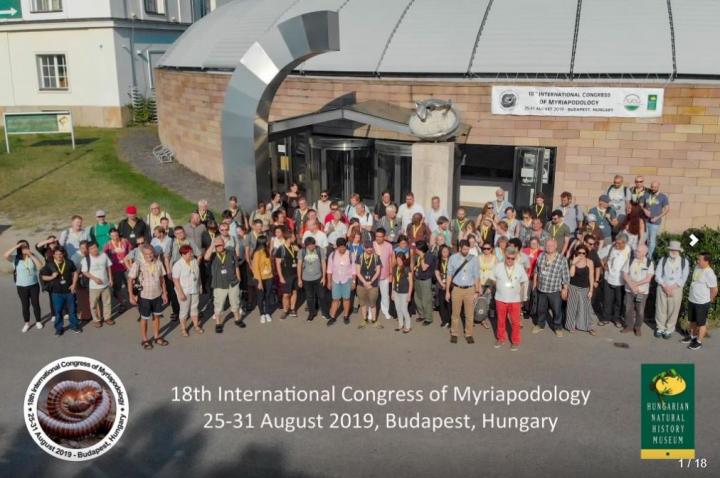
Credit: 18th International Congress of Myriapodology
Last year, the 18th International Congress of Myriapodology brought together 92 of the world’s top experts on the curious, yet still largely unknown multi-legged centipedes, millipedes, pauropods, symphylans (collectively referred to as myriapods) and velvet worms (onychophorans).
Held between 25th and 31st August 2019 at the Hungarian Natural History Museum in Budapest and co-organised by the Hungarian Biological Society, the biennial event saw the announcement of the latest findings related to the diversity, distribution and biology of these creatures. Now, the public gets the chance to learn about a good part of the research presented there on the pages of the open-access scholarly journal ZooKeys.
The special issue in ZooKeys, “Proceedings of the 18th International Congress of Myriapodology (25-31 August 2019, Budapest, Hungary)”, features a total of 11 research articles reporting on species new to science, updates on the distribution and conservation of already known myriapods and discoveries about the biology, ecology and evolution of individual species. Together, the publications reveal new insights into the myriapod life on four continents: Europe, Asia, Africa and Australia.
Amongst the published research outputs worth mentioning is the comparison between regional and global Red Listings of Threatened Species that worryingly identifies a missing overlap between the myriapod species included in the global IUCN Red List and the regional ones. This first-of-its-kind overview of the current conservation statuses of myriapods from around the world highlights the lack of dedicated funding for the conservation of hundreds of threatened myriapods. As a result, the scientists behind the study urge for the establishment of a Myriapoda Specialist Group in the Species Survival Commission of the IUCN.
Meanwhile, to give us a hint about how many millipedes are out there unbeknownst to the world and any conservation authorities, at the congress, three research teams revealed a total of seven new to science species: three giant pill-millipedes from Vietnam, another three from the biodiversity hotspot Madagascar and a spirostreptid millipede inhabiting Sao Tome and Principe.
Amongst the rest of the papers is the curious discovery of two Tasmanian species of flat-backed millipedes of the genus Tasmaniosoma whose neighbouring populations have seemingly come to their own terms to keep distance between each other, save for a little stretch of land, for no obvious reason. Not a single site where both species occur together was found by Dr Bob Mesibov, the millipede expert behind the study. How is the parapatric boundary maintained? How, when and where did the parapatry originate? These are the big mysteries that the already retired Australian scientist leaves for his successors to resolve.
###
All articles published in the “Proceedings of the 18th International Congress of Myriapodology (25-31 August 2019, Budapest, Hungary” special issue, edited by Dr. Zoltan Korsos (now University of Veterinary Medicine Budapest) and Dr. Laszlo Danyi (Hungarian Natural History Museum), are publicly available in the online, open-access, peer-reviewed scholarly journal ZooKeys.
Contacts:
Dr. Zoltan Korsos
Email: [email protected]
Dr. Laszlo Danyi
Email: [email protected]
Media Contact
Dr. Zoltán Korsós
[email protected]




